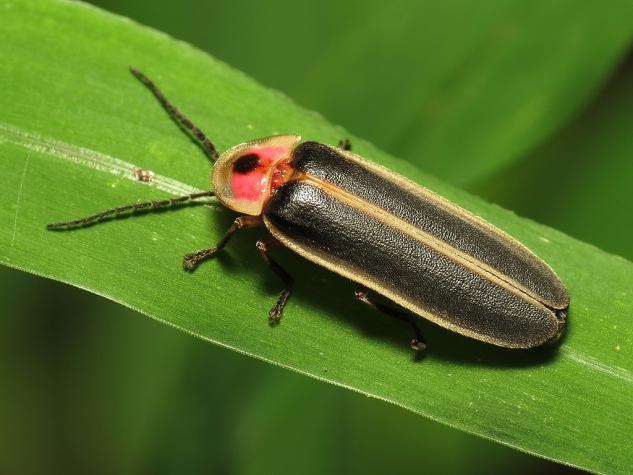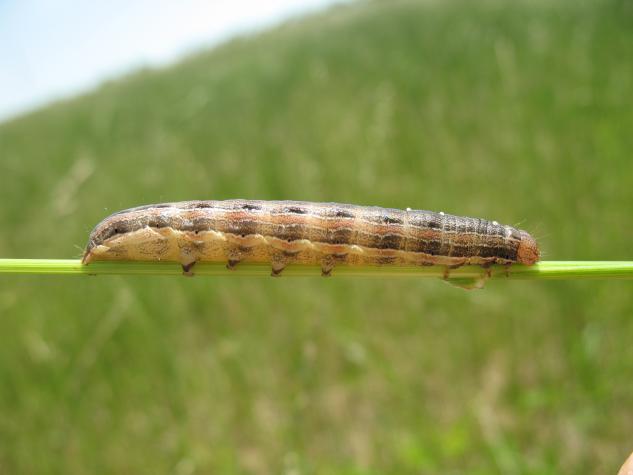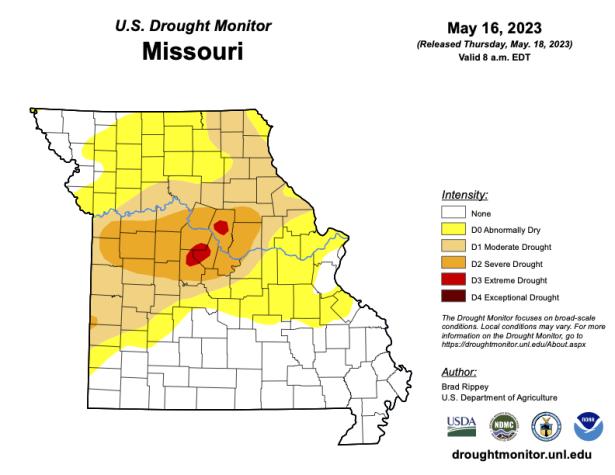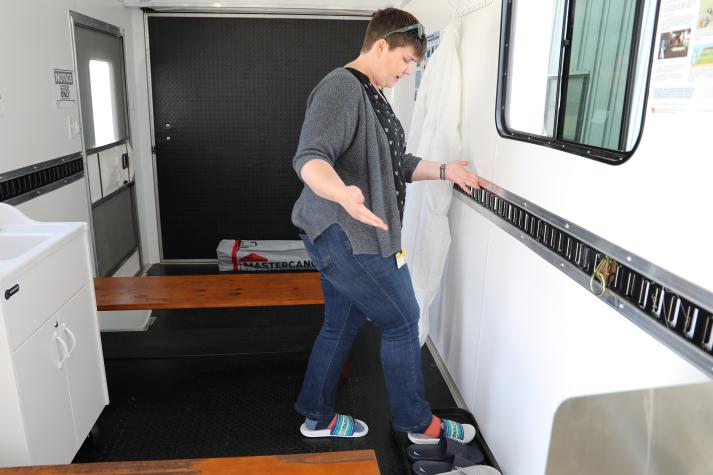

Golfers help raise more than $91,000 at Missouri 4-H Clover Classic
Golfers raised over $91,000 at the 4-H Clover Classic to support youth programs across Missouri.
MU Extension launches Crop & Pest text alert system
COLUMBIA, Mo. – Missouri farmers have a new tool to alert them to insects, crop diseases and other important information from University of Missouri Extension specialists. MU Extension specialists launched the Mizzou Crop & Pest Text Alert system in response to their clients’ desire for an easy way to get important, timely information in the field.
Graves-Chapple weather station updates to real-time information
ROCK PORT, Mo. – An upgraded University of Missouri weather station in Atchison County now provides real-time weather data. The South Atchison weather station will give the agricultural community automated critical information, says Jim Crawford, director of the MU Graves-Chapple Extension and Education Center.

Fireflies illuminate landscapes with summer love
COLUMBIA, Mo. – The flickering of fireflies signals the beginning of warm summer nights. Although these common beetles evoke a sense of wonder for many people, they are simply performing a luminescent courtship ritual that has evolved over countless years, says University of Missouri Extension state horticulturist Michele Warmund.
Missouri Good Neighbor Week named Program of the Year at Neighborhoods USA conference
SPRINGFIELD, Mo. – David Burton, a community development specialist with University of Missouri Extension, returned from the 48th annual Neighborhoods USA (NUSA) conference in El Paso, Texas, May 24-28, with the Best Neighborhood Program award. This year's conference drew more than 625 people from 34 states and featured educational workshops, speakers, tours, networking opportunities and an awards program.

Missouri 4-H'ers raise more than 1.7 million meals to fight hunger
Youth in Missouri organized drives, fundraisers and community events to raise over 1.7 million meals statewide, boosting awareness and support for local hunger relief.
Water deeply and wisely during drought
During drought, water plants deeply and wisely to help them survive dry spells. Follow expert tips for effective watering.
MU Extension specialists report thin pasture stands, low yields
Dry conditions are causing thin pastures and low hay yields across Missouri, stressing farmers and livestock producers this spring.
Ozark Empire Fair Hay Show call for entries
SPRINGFIELD, Mo. – Now that hay season is in full swing, it is a good time to pull hay samples for entry in the Ozark Empire Fair Hay Show in Springfield, says University of Missouri Extension agronomy specialist Tim Schnakenberg.Entry deadline is July 17. To enter, contact the nearest MU Extension specialist. They are available to help pull the core samples from the 10-bale entry.

Now is time to scout for true armyworms in Missouri
Scout pastures, wheat, and corn for true armyworms to prevent crop damage. Check larvae at dawn or dusk for effective control.

MU Career Accelerator: New paths to build employee skills, workforce participation
Build skills and boost workforce participation with online bootcamps, certifications, and customized training programs.
KC landscape business grows with help from the Missouri APEX Accelerator
KANSAS CITY, Mo. – When Chris Henry wanted to grow his lawn care business, RC Landscape Services, to pursue government jobs in the Kansas City area, he turned to the Missouri APEX Accelerator, a program of University of Missouri Extension.
Telehealth helps rural Missourians access mental health services
Telehealth expands mental health access for rural Missourians, offering remote, convenient care through phones or the internet.
MU Extension works to fight startling statistics on mental health in Missouri
Rural Missouri faces rising mental health challenges; teletherapy and awareness programs provide critical support to farm families.

MU Extension encourages you to report precipitation
Help strengthen drought monitoring by reporting your daily rainfall totals to national networks and support community climate tracking.
Convoy of Hope partners with MU Extension on new weather station
A new weather station in Greene County provides real-time data to support agriculture and research in southwestern Missouri.
Implementing A Youth Futures SPIN Club in Lincoln County
The Issue Troy Middle School teachers are offering a curriculum related to career readiness through an elective class. Troy is a small town in the county of Lincoln in the St. Louis area. It is a “bedroom” community where most of the adult population live in Troy but work outside the county.

Blanket your flower beds with colorful gaillardias
Add vibrant color to your garden with easy-care Gaillardias that bloom all summer and thrive in full sun and well-drained soil.
Get more hydrangea with these simple steps
HILLSBORO, Mo. – One of summer’s most showstopping bloomers is easy to transplant and propagate, says University of Missouri Extension horticulturist Debi Kelly. Hydrangeas burst with blooms summer and fall in colors ranging from blues and white to lavender and pinks. Bloom size varies on this low-maintenance perennial shrub, which tolerates almost any type of soil, sun or shade, although it prefers partial sun.
Missouri 4-H Foundation awards $87K in scholarships
COLUMBIA, Mo. – The Missouri 4-H Foundation is awarding scholarships totaling $87,000 to Missouri 4-H youths to help further their education.
Boost your blossoms by deadheading
BLUE SPRINGS, Mo. – Deadheading flowers can help gardeners get more bang for the buck, says University of Missouri Extension horticulturist Tamra Reall.Removing faded and dead blooms costs nothing but time and encourages plants to put their energies into forming new blossoms instead of producing seed, says Reall. Additionally, deadheading gives the plant a tidier, more vibrant appearance.
It's time to remove fescue seed heads to reduce toxins
Removing fescue seed heads helps reduce toxins, improve cattle health, and boost pasture quality through clipping, haying, or spraying.

Know the signs of stress
Recognize emotional, behavioral, and physical stress signals so you can act early, practice self-care, and seek help when needed.

MU Extension biosecurity trailer demonstrates Danish entry system
A mobile biosecurity trailer demonstrates the Danish entry system, helping livestock producers reduce pathogen transmission with minimal space.
Cut hay now and cut it high for best yield, persistence
COLUMBIA, Mo. – It’s time to make the first cutting of hay in Missouri, says University of Missouri Extension state forage specialist Craig Roberts.Waiting too long leads to poor-quality feed for livestock next winter. For best quality, harvest hay in May before seed heads pollinate, says Roberts.
